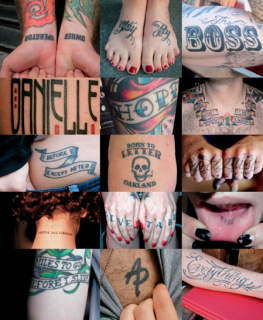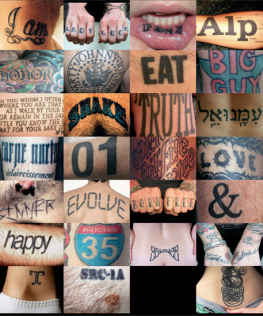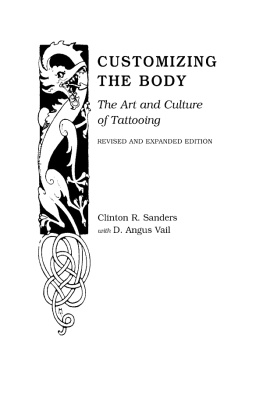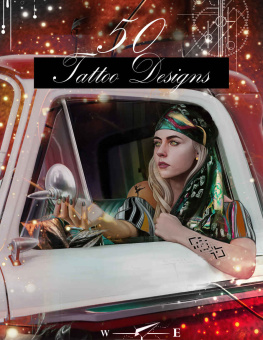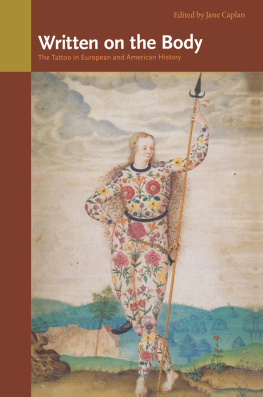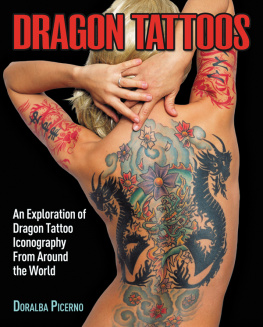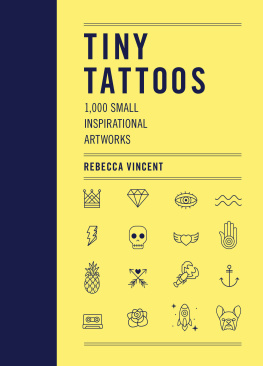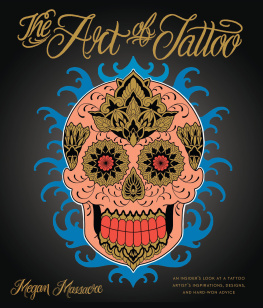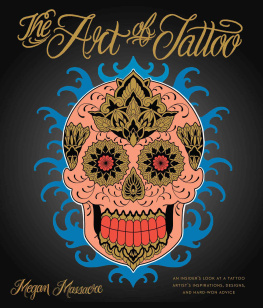

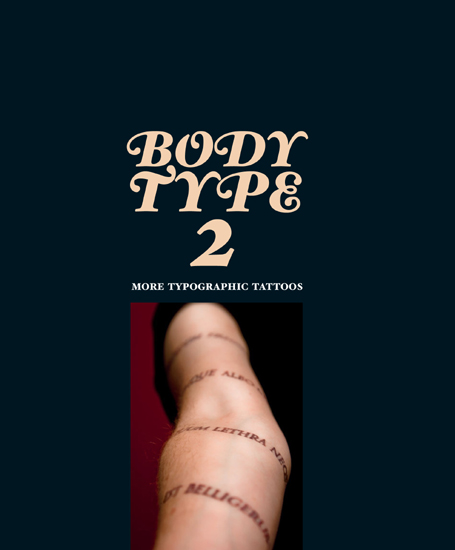


Editor: Tamar Brazis
Designer: Ina Saltz
Production Manager: Jacquie Poirier
Library of Congress Cataloging-in-Publication Data
Saltz, Ina.
Body type 2: more typographic tattoos / by Ina Saltz.
p. cm.
ISBN 978-0-8109-8276-5 (hardcover with jacket)
1. Tattooing. 2. Words in art. I. Title.
GT2345.S253 2010
391.65dc22
2009035085
Copyright 2010 Ina Saltz
Cover photographs 2010 Ina Saltz
Number spiral courtesy of screaMachine.
Push PSDs courtesy of Glenn Sorrentino.
La Serenissima courtesy of Michael Stinson.
Rimbaud quote courtesy of Rubistyle.
Danielle courtesy of Stephanie Tamez.
Born to Letter courtesy of Ed Rachles.
Optimist courtesy of Gene Pittman.
Please see this page for interior illustration credits.
Published in 2010 by Abrams Image, an imprint of ABRAMS. All rights reserved. No portion of this book may be reproduced, stored in a retrieval system, or transmitted in any form or by any means, mechanical, electronic, photocopying, recording, or otherwise, without written permission from the publisher.
Abrams books are available at special discounts when purchased in quantity for premiums and promotions as well as fundraising or educational use. Special editions can also be created to specification. For details, contact specialmarkets@abramsbooks.com or the address below.

115 West 18th Street
New York, NY 10011
www.abramsbooks.com
Dedicated to my husband, Steven

CONTENTS
INTRODUCTION
Why Body Type?
After publishing Body Type: Intimate Messages Etched in Flesh, I received many letters from fans, photos of tattoos, and inquiries about how I came to document the phenomenon of typographic tattoos. As I began to collect images for a new volume, I found myself answering the same three questions from my fans and subjects.
How did you get the idea forBody Type?
My involvement with the world of tattoos began in the most unlikely of ways. In the summer of 2003, I was traveling crosstown in New York City on the M86 bus when I spotted an interesting-looking young man with a large, text-only tattoo on his right forearm; it spelled out happy in a typeface which I instantly recognized as Helvetica. The fact that it was in lowercase letters and so tightly kerned that the letters were touching was especially intriguing to me as a designer and a typophile. I had never seen a tattoo quite like this onesans serif! Not being in the habit of talking to strangers in New York City, I debated mightily before approaching him but my curiosity finally got the better of me. Are you a graphic designer? I asked. Why, yes, he was. And would you mind if I took a photo of your tattoo to show my students? I teach typography at City College. No problem. I whipped out my digital camera and managed to get one shot and to grab his proffered business card before I jumped off at my stop. That evening I uploaded the photo and went to the Web site on his business card to send him the image with a proper thank-you message. Imagine my astonishment to find our entire conversation recounted on his blog!
Always searching for interesting topics for articles that I write on design-related topics, I seized upon the notion of documenting this new style of tattoo: unadorned words rather than images. Fortuitously, not far away, a huge tattoo convention was happening that very weekend. I called my editor, who arranged for a press pass. An article soon followed, and, when I realized that no one had ever specifically documented typographic tattoos in book form, the idea for a book called Body Type was born.
Where did you find these typographically tattooed people?
As often happens when encountering something new, having seen one typographic tattoo, I then started to see them everywhere (it was August and a lot of skin was visible). It seemed almost as if I had developed a third eye that had the unique ability to spot typographic tattoos, in conjunction with an uncanny instinct about who, in a crowded room, was most likely to be sporting ink. I learned to keep my camera and model releases with me at all times. Wherever I wentto a party or the beach or to a gallery opening or other professional eventI always discovered a typographic tattoo or someone who knew someone who had one. Many of my favorite tattoos from both books resulted from these serendipitous encounters, rather than from seeking people out online or at tattoo conventions. Especially after the publication of the first volume of Body Type, many people with typographic tattoos simply found their way to me.

Miked in the Fox News green room with New Yorkbased tattoo artist Stephanie Tamez.
Do you have any tattoos?
No. Although I like to joke that I do and that they are in a place too intimate to expose, for many reasons I do not have a tattoo and am unlikely to ever get one. I do have a great respect for the very permanent choice to commit to a tattoo but, as a designer, I find I inevitably want to redesign, and so I cannot make such an irrevocable commitment. I also have a phobic fear of needles, so I do not even have pierced ears (or any other pierced body parts). Thus it is a great irony that I am documenting an art form which requires repeated penetration of ones skin with needles!
That you are readingBody Type 2 testifies to the unstoppable trend of typographic, or, as I like to call them, intellectual tattoos. The first volume of Body Type was published by Abrams Image in September 2006. Perhaps because this was the first time special attention had been paid to the subject of tattoos composed specifically of words, passages of text, and letterforms, or perhaps because the subject had been presented in a scholarly and design-focused format, Body Type received a good deal of media attention and popular acclaim, especially within the creative community.
Much has happened in the few years since the release of Body Type. I could not have predicted that the book would go into several printings to satisfy the demand for it here in the United States and abroad, even in non-English-speaking countries where distribution was sparse or nonexistent. I received (and continue to receive) e-mail messages from all corners of the globe (Brazil, Switzerland, South Africa, Holland, Australia, Italy, Paraguay, Denmark, England, France, and, of course, throughout the United States) from fans. A graphic design student in Tasmania based her college thesis on
Next page
